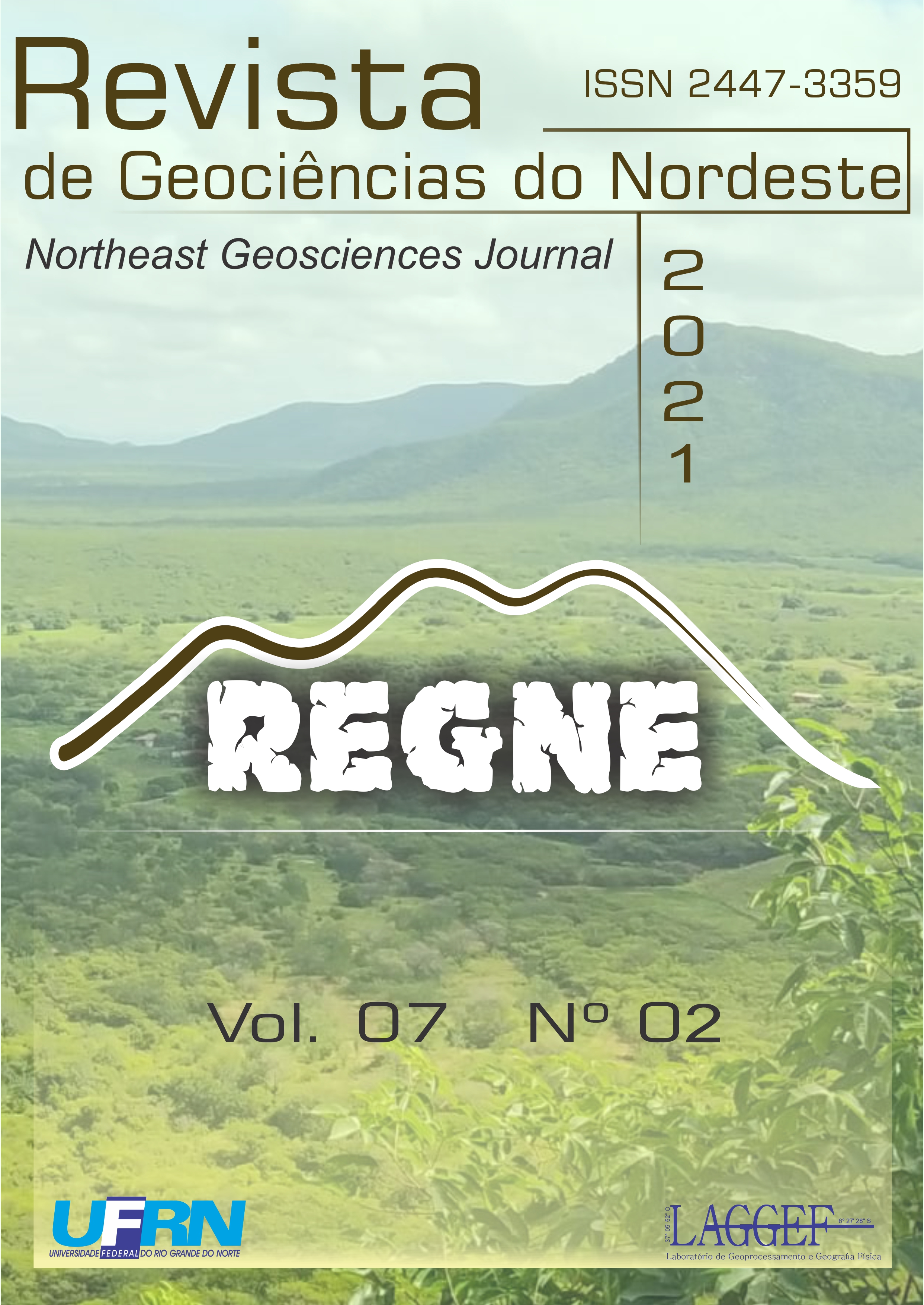Aguaribe Valley: an oasis in danger in the brazilian semi-arid – systematic review on environAguaribe Valley: an oasis in danger in the brazilian semi-arid – systematic review on environmental contamination and potential damage to the basin and its users
DOI:
https://doi.org/10.21680/2447-3359.2021v7n2ID24607Abstract
The Jaguaribe River is the largest watercourse in Ceará, one of the semi-arid states of northeastern Brazil in which the effects of sazonal droughts are most significant. To manage the water scarcity, the Government has tried to perpetuate hydrographic basins, including the Jaguaribe River basin. Since the 1960s, the elaboration of policies and the construction of reservoirs have encouraged the beginning of irrigated agriculture in the state, bringing large multinational companies and the need for intense agribusiness modernization. Over the past 15 years, concerns about intense harm effects of the traditional agricultural activity on the Jaguaribe Basin environment have been shown throughout the scientific papers on the pesticides accumulation, heavy metals and polycyclic aromatic hydrocarbons in the waters, sediments and living organisms, in addition to the increase in prevalence of acute intoxications and cancer in the population of municipalities within the Basin. The objective of the current work was to systematically review the publications on the health of Jaguaribe River, investigates the contamination on its bed, soil, fauna and human users, alerting to the neglect of one of the most important water sources in northeastern Brazil.


 Português (Brasil)
Português (Brasil) English
English







